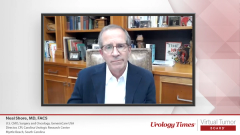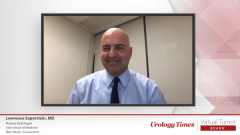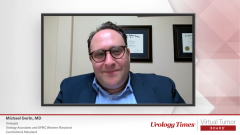
The Future of Prostate Cancer Imaging
Prostate cancer experts highlight some closing thoughts and exciting research in progress on prostate cancer imaging.
Episodes in this series

Neal Shore, MD, FACS: Let me take this opportunity to go around the horn for some closing and final thoughts. Larry, let’s start with you, and then we can go to Steven and then Michael, please.
Lawrence Saperstein, MD:First, thanks for including me in this exciting, stimulating discussion. But as a nuclear radiologist, I feel that PSMA [prostate-specific membrane antigen]-targeted imaging, and now we are talking about therapy, is a game changer, and that’s how I refer to it. It’s the most impactful breakthrough in the diagnostic imaging that I have seen in my career. We’re just beginning to realize the benefits on an imaging level, and then as a therapeutic agent. And theragnostics, we could spend another few tumor boards talking about theragnostics, but the implications are tremendous, and it’s just the tip of the iceberg. So thanks again, it’s a great time.
Neal Shore, MD, FACS: Steven?
Steven Finkelstein, MD, DABR, FACRO: Let me echo that by saying it’s an absolute pleasure to be on this wonderful panel today, moderated by Neal. For me, it’s an incredibly exciting time to be a radiation oncologist who is interested in prostate cancer. When we look at the data that we talked about today from an imaging standpoint, it’s clear that next-generation imaging is going to continue to change the way we practice. As Neal alluded to, the VISION trial is a model system for showing how radiation drugs, radiotherapeutics, theragnostics, these words that we are talking about, drugs that can be given that have a radiation flavor that are tied to next-generation imaging, are going to be very important in the years to come. There are a lot of people watching this who are interested in this, but there are a lot of people I know out there who are not quite sure about where this is all going. All of the fancy imaging that we’re talking about is going to directly impact the way we take care of patients, all of us as urologists and radiation oncologists, and medical oncologists. I would encourage those who are watching today to get yourself educated because there is a lot of exciting work that is going to be coming down the pike.
Neal Shore, MD, FACS: Thank you Steven, and final thoughts, Mike.
Michael Gorin, MD: Thank you. I want to echo the other panelists in thanking Dr Shore and Urology Times® for organizing this evening’s tumor board. It has been fantastic participating with the other panelists. I would echo the comments of the earlier speakers about my excitement pertaining to PSMA-targeted imaging. I feel it has clearly made a substantial difference in our ability to risk stratify patients, determine the most appropriate therapies, and so forth, in particular in the initial staging evaluation in the biochemical recurrent space.
Clearly, some questions remain as we move into more advanced disease settings, and that evolves around, are we putting patients in the correct categories with respect to where different therapies have been approved? There are also questions surrounding the appropriateness of using metastasis-directed therapy with PSMA imaging and its role with following response to therapy. That’s really the 2.0 of PSMA-targeted imaging research, to figure out the answers to all those questions. It’s just the tip of the iceberg, especially with PSMA theragnostics now coming down the pipeline. We are going to see even more PSMA-targeted agents in the way of things like CAR [chimeric antigen receptor] T-cell therapy targeting PSMA, and so forth. It’s just the beginning of the story here and there is so much to learn, and it’s an amazing and exciting time to be a urologist.
Neal Shore, MD, FACS: Gentleman, thank you so much. Dr Steven Finkelstein, Dr Larry Saperstein, and Dr Michael Gorin, you guys are awesome. Thank you for all the preparation you did for this. Thank you for sharing your cases. Thank you for all the clinical trials, research, and education that you have done and continue to do.
To our viewing audience, it was a pleasure to have your attention and be part of Urology Times® Virtual Tumor Board® today. On behalf of all the faculty, we hope you found this to be valuable, especially the case presentations as well as the review of the data. I hope you can take a lot of this information from a practical standpoint back to the clinic. Like all of us, we are looking forward to additional studies. We have unmet needs and answers that we have to come up with, and that’s the exciting part for all of us being physician scientists.
Once again, gentlemen, thank you so much, and thank you everybody for listening.
Transcript edited for clarity.
Newsletter
Stay current with the latest urology news and practice-changing insights — sign up now for the essential updates every urologist needs.























